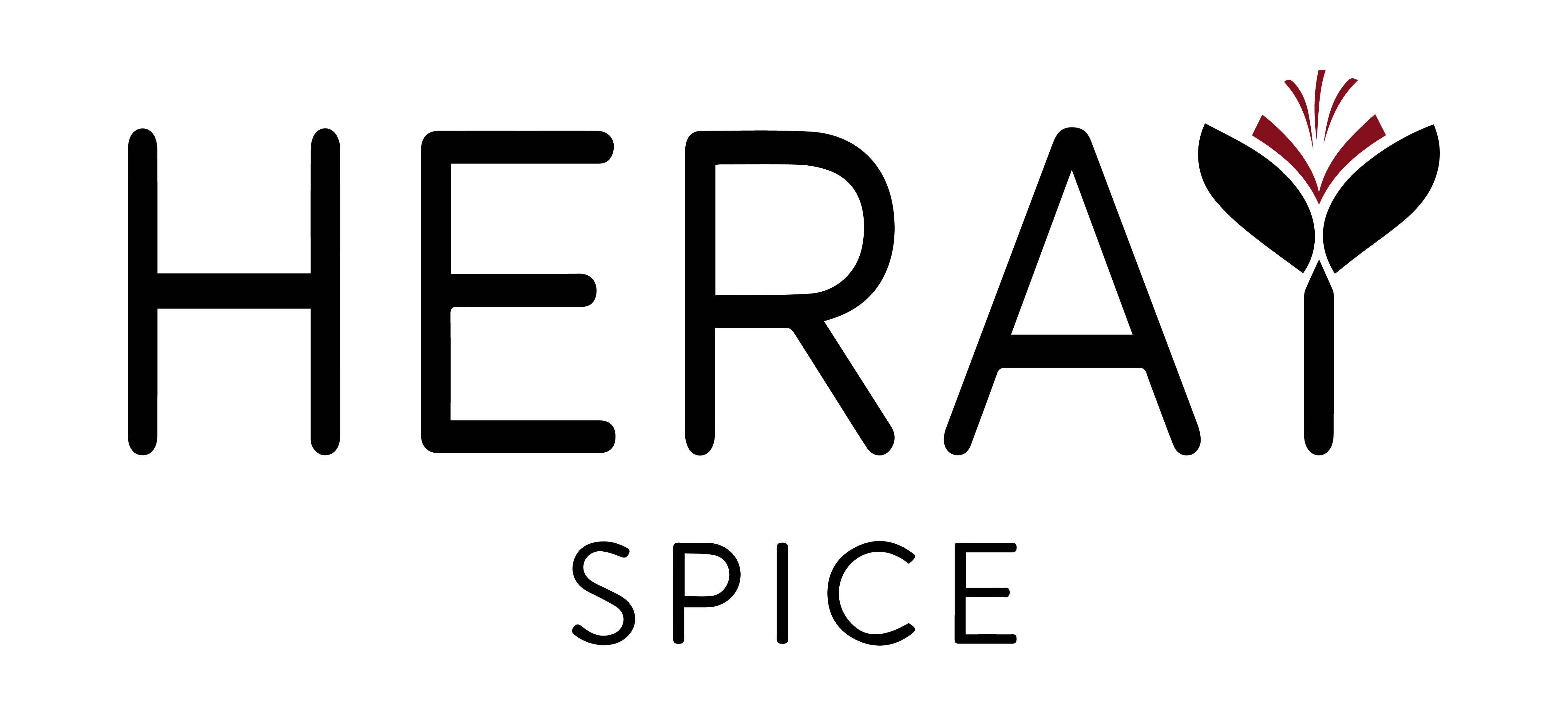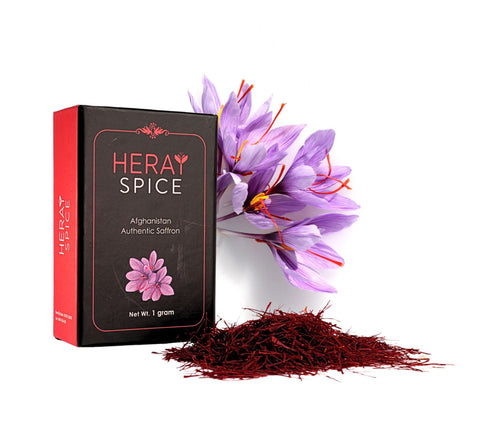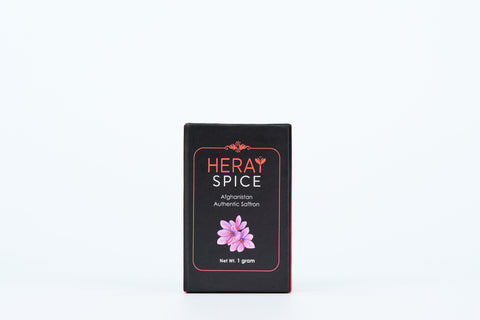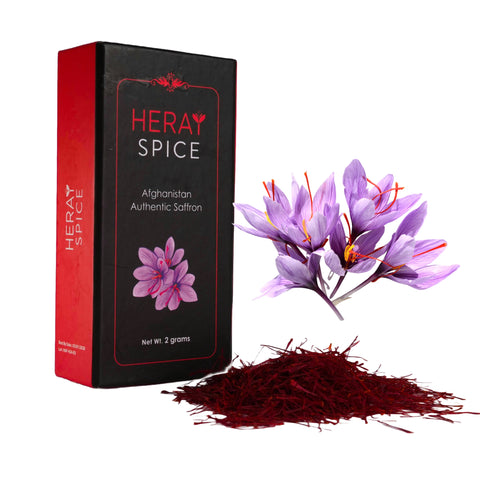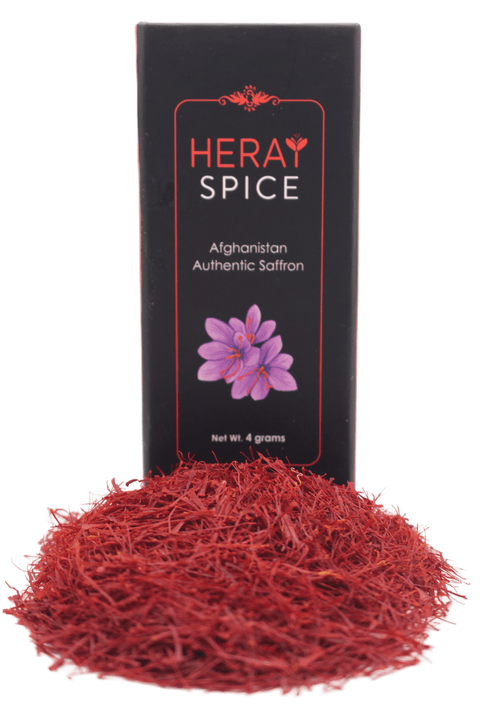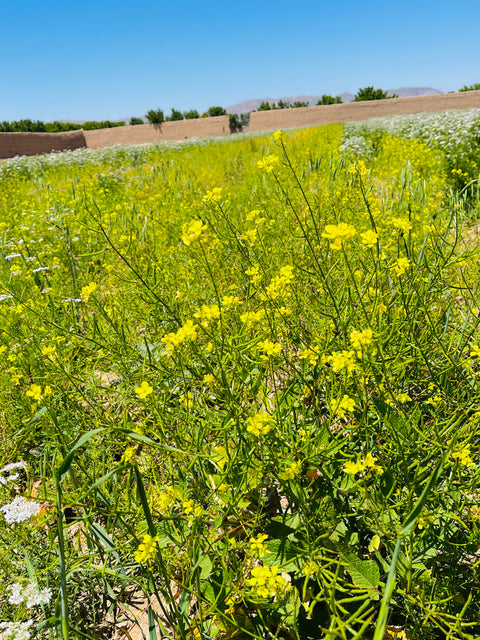The world’s most expensive spice can be an everyday ingredient — if you know how to use it

“Our biggest challenge is to get people to use it,” Ethan Frisch, the co-founder and co-owner of the spice company Burlap & Barrel, says about saffron. “They think it’s so valuable they almost don’t want to cook with it.”
The world’s most expensive spice is many things: an irreplaceable staple of various cuisines, the focal point of a multibillion-dollar industry, a hot topic in the realm of geopolitics, a victim of fraudulent trading. But it’s also an ingredient that’s been used in everyday cooking for as long as it’s been cultivated. There is, in other words, a lot to say about saffron, so let’s get started.
What is saffron?
Saffron comes from the stigmas of the purple Crocus sativus flower, also known as the saffron crocus because of its prized crimson threads. The trumpet-shaped stigmas are long and deep red, and typically have orange and yellow hues near their base. The saffron crocus typically appears six to eight weeks after planting, and produces up to three stigmas once it blooms.
Where does saffron grow?
The majority of saffron production takes place in warm Mediterranean and semiarid climates, spanning from Spain to Kashmir. Other major producers include Afghanistan, Morocco, and Greece. There are also micro producers loosely scattered around the United States, such as Cyprus Saffron in central Washington and Calabash Gardens in Vermont; the Pennsylvania Dutch even have a long-held tradition of cultivating saffron in their communities. But regardless of attempts to diversify the global saffron market, the world’s leading producer is indisputably Iran, which controls about 85 percent of the entire industry, according to the United Nations Food and Agriculture Association.
Where did saffron originate?
Ancient foods like saffron are inevitably claimed by various cultures. And because much of the world’s saffron grows in Greater Khorasan, the historical region that straddles eastern Iran and Afghanistan, it’s commonly believed that its warm, fertile land is also the spice’s birthplace, especially by those who also have roots there.
“Growing up Iranian, I always noticed so much pride around saffron,” says Omid Roustaei, the creator behind Iranian food blog the Caspian Chef. “And because of Iran’s role as a major producer, we were always told it originated there. But, of course, today’s borders are more defined than before.”
As Roustaei points out, saffron’s regional presence predates modern borders. “From the research I’ve done, I can say with some certainty that it originated in the area that includes modern-day Iran, but we can’t pinpoint exactly where saffron originated,” says Naz Deravian, a food writer and the author of Bottom of the Pot: Persian Recipes and Stories. “It’s the Sumerians that appear to be the first civilizations that we can speak of that were using saffron.”
“If you ask my 80-something-year-old uncle, he will tell you Alexander the Great brought saffron to Greece after visiting ancient Persia and seeing people drink saffron tea and smear its dyes on their faces,” says Mohammad Salehi, the CEO and co-founder of Heray Spice Saffron, a saffron farmers co-op in Afghanistan.
“But some Afghans will say that it was the Greeks who actually brought saffron to the region,” he continues. “In those times, explorers wanted to conquer different parts of the world and build statues of their leaders, or maybe bring parts of their agriculture to new regions. So the Greeks would come to Persia and cultivate fields of saffron.”
Regardless of which theory we choose to believe, evidence of saffron’s cultivation dates back several millennia to ancient Assyria. The earliest evidence of saffron cultivation is a botanical reference compiled under King Ashurbanipal of Assyria from the seventh century BCE. It’s the Phoenicians who receive credit for spreading saffron throughout the Mediterranean during the classical Greco-Roman period between the eighth century BCE and fifth century CE.
How is saffron harvested?
The saffron crocus is harvested in the fall. Its purple flowers are cut off from their stems in the morning, ideally on a bright, sunny day when the crocus is fully open. From there, the stigmas are individually plucked by hand, making the entire process laborious and time-consuming. Because the stigmas are so fragile, there is currently no mechanical alternative to harvesting saffron that doesn’t risk damaging the threads. Once they’ve been collected, they are tested for quality, examined for sanitation, and gently dried before packaging and shipping.
The harvesting process is what makes saffron so expensive. For context, it takes 4,000 flowers to produce one ounce of saffron powder. The price per ounce can vary depending on quality, but some saffron varieties cost over $10,000 per kilogram.
How many kinds of saffron exist?
Although all saffron comes from the Crocus sativus, it is sold in different grades.
“There are varying qualities of saffron threads, starting at the base of the stigma with a pale yellow that turns into a burnt orange before becoming a brilliant crimson red at the top,” says Deravian. “The red part is the negin, which means ‘jewel’ in Farsi.”
Negin is highly sought after, and sold in grades that vary in quality and price. They include sargol, super negin, and pushal. Sargol, which is at the very tip of the stigma, is an extra-deep red; its threads are small, fragile, and aromatic. Super negin refers to the darker red portion of the negin and encompasses the sargol; it is the priciest and rarest type of saffron. Pushal is a mixture of both the red and yellow parts of the stigma, and also the cheapest and most common grade of saffron available, since the darker, more intensely red strands are believed to be higher quality and to have more potent aromas and flavor.
“Cooks and chefs solely want the super negin and sargol. But as a farmer, I view saffron from a technical standpoint,” says Salehi. “We determine saffron’s quality based on three elements: crocin, safranal, and picrocrocin. We measure these elements in a lab prior to packaging to determine accuracy and quality of product.”
The first element, crocin, refers to the level of redness of saffron, while safranal and picrocrocin are the chemicals responsible for saffron’s aroma and flavor, respectively. Their levels are measured according to the quality standard ISO 3632. Some brands, like Zaran, include a certificate of analysis on their website. The saffron is analyzed before it is graded, packaged, and distributed — at least by exporters who are in the business of selling high-quality saffron.
“Saffron has a shelf life of two to three years before it loses its natural sweetness and turns more sour, and scales like picrocrocin tell us that,” explains Salehi. “Picrocrocin will even tell us where in the world a batch of saffron is from. And on the topic of aroma, I’d argue most of the aroma comes from the parts that people don’t like, the yellow parts. But cooks and farmers often view saffron differently.”
What does saffron taste like?
“Saffron isn’t so much a flavor, but more so a presence,” says Frisch.
Describing the taste of saffron can be tricky, even for those who are very familiar with it. The delicate threads can be described as earthy, grassy, or perhaps floral, and those floral notes can also carry a faint sweetness.
Because saffron is also commonly thrown into dishes with other ingredients, it’s difficult to pinpoint its exact flavor profile. “I rarely use saffron as the sole seasoning in a dish,” says Roustaei. “But what I can say is that you can tell if it’s not in a dish. It’s instantly noticeable.”

Read full article on Eater.com
